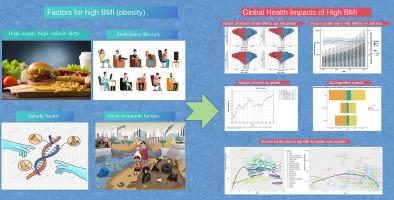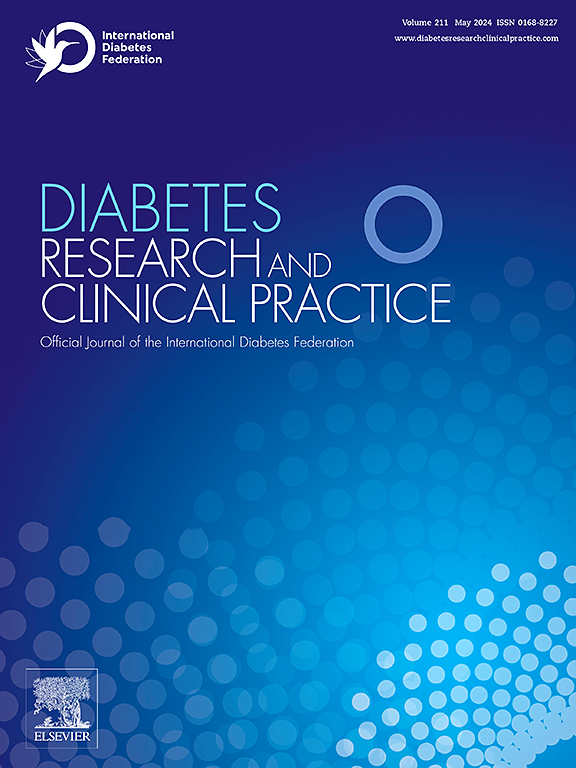高体重指数对全球健康的影响:对不同地区和人口统计趋势和差异的 30 年分析。
IF 6.1
3区 医学
Q1 ENDOCRINOLOGY & METABOLISM
引用次数: 0
摘要
目的:本研究利用《2021 年全球疾病负担研究》(GBD 2021)的数据,探讨了 1990 年至 2021 年与高体重指数相关的全球疾病负担:本研究利用《2021 年全球疾病负担研究》(GBD 2021)的数据,探讨了 1990 年至 2021 年与高体重指数(BMI)相关的全球疾病负担:方法:我们采用联结点回归法评估死亡和残疾调整生命年(DALYs)的趋势,并采用ARIMA模型预测未来与BMI相关的负担:从 1990 年到 2021 年,全球与高体重指数相关的死亡人数激增了 153.97%,从 146 万人增加到 371 万人。残疾调整寿命年数增加了 167.57%,其中北非、中东和南亚的增幅最大。与男性相比,女性,尤其是 75 岁及以上的女性,在 2000 年后的疾病负担增加速度更快。未来的预测表明,与体重指数相关的健康影响将继续增加,尤其是在中低收入国家:结论:高体重指数造成的全球疾病负担正在迅速增加,尤其是在中低收入地区。有针对性的公共卫生干预措施,尤其是针对妇女和老年人的干预措施,对于应对这一日益严峻的健康挑战至关重要。本文章由计算机程序翻译,如有差异,请以英文原文为准。

Global health impacts of high BMI: A 30-Year analysis of trends and disparities across regions and Demographics
Objective
This study explores the global disease burden associated with high Body Mass Index (BMI) from 1990 to 2021, using data from the Global Burden of Disease Study 2021 (GBD 2021).
Methods
We applied Joinpoint regression to assess trends in deaths and Disability-Adjusted Life Years (DALYs) and employed ARIMA models to project future BMI-related burdens.
Results
From 1990 to 2021, global deaths linked to high BMI surged by 153.97%, rising from 1.46 million to 3.71 million. DALYs increased by 167.57%, with the highest rises in North Africa, the Middle East, and South Asia. Women, particularly those aged 75 and above, experienced the most significant burden, with a faster rate of increase in disease burden compared to men post-2000. Future projections indicate a continued rise in BMI-related health impacts, particularly in low- and middle-income countries.
Conclusions
The global disease burden attributable to high BMI is increasing rapidly, particularly in low- and middle-income regions. Targeted public health interventions, especially for women and the elderly, are crucial to addressing this growing health challenge.
求助全文
通过发布文献求助,成功后即可免费获取论文全文。
去求助
来源期刊

Diabetes research and clinical practice
医学-内分泌学与代谢
CiteScore
10.30
自引率
3.90%
发文量
862
审稿时长
32 days
期刊介绍:
Diabetes Research and Clinical Practice is an international journal for health-care providers and clinically oriented researchers that publishes high-quality original research articles and expert reviews in diabetes and related areas. The role of the journal is to provide a venue for dissemination of knowledge and discussion of topics related to diabetes clinical research and patient care. Topics of focus include translational science, genetics, immunology, nutrition, psychosocial research, epidemiology, prevention, socio-economic research, complications, new treatments, technologies and therapy.
 求助内容:
求助内容: 应助结果提醒方式:
应助结果提醒方式:


